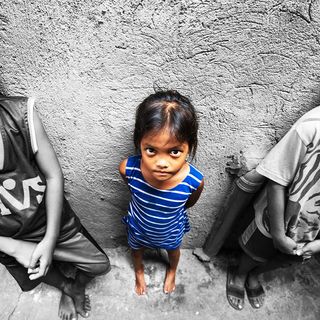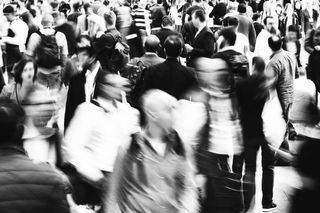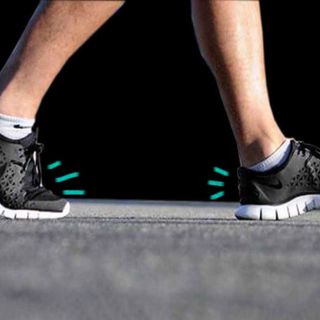
For People With Social Anxiety Disorder, Everyday Interactions Are a Source of Fear
Social anxiety disorder is often dismissed as a personality quirk, but it’s a condition that requires treatment.

Social anxiety disorder (SAD) is a common mental health issue that often gets written off as shyness. Social anxiety disorder’s symptoms include developing a fear of social situations, offending someone, potential humiliation and the harsh judgment of people. The toll this disorder takes on people suffering from it is often underestimated.
By contrast, shyness is a personality quirk that may cause feelings of discomfort and awkwardness in social situations, but not fear or disability.
Receiving a diagnosis becomes difficult for people with social anxiety, due to India’s lack of quality mental health professionals.India has a population of 1.2 billion people – and at least five crore of them live with a mental illness, reports The News Minute. But, according to the latest data provided by the Government of India, there are fewer than 4,000 psychiatrists in the country. That is just about one psychiatrist for 13,000 people.
The lack of access to diagnosis and treatment also makes raising awareness about this difficult mental health issue difficult. Very recently, LiveMint reported on the experience of Sucheta Pal, a Zumba instructor living with social anxiety disorder: “A decade into a high-pressure corporate job, Pal suddenly found [that] small issues at work were seeming big, she dreaded meetings and would break into a sweat while conducting small talk in the elevator with colleagues. Simple networking, which others could do easily, was insufferable for her, and meeting someone new was always a nightmare,” the report said.
When the symptoms worsened, Pal visited a psychologist and was finally diagnosed with social anxiety at a stage that needed active management, the report added.
Related on The Swaddle:
Common Teen Mental Health Struggles — and How to Respond
Social anxiety is not shyness, say psychologists. “It is a condition that has specific symptoms, both physical and mental, and needs treatment,” says Dr. Kedar Pandya, a Mumbai-based psychologist. He explains shyness as a situation wherein a person is hesitant to talk to people. This is not comparable to social anxiety, which is debilitating and shows up as an irrational fear of performing activities in front of people or interacting with them. “People who have SAD are always critical of themselves, feel like they are being judged for anything they do or speak about. They are often perceived as being quiet, withdrawn and nervous,” he adds.
It’s also not the same as loneliness, explains Dr. Pandya. “They do want to make friends, they want to be included in groups, but having this anxiety becomes an obstacle in the way of doing so.”
Dr. Sadanand Palve, also a Mumbai-based psychologist, lists the physical symptoms of social anxiety as sweating, hot flashes, shallow breathing, a racing heart, feeling tense or shaky and tightness in the chest in social situations.
“It can begin as early as at the age of 10 and can be confused with kids being shy,” says Dr. Palve. “There is no clarity on how people can get [social anxiety disorder]. It could be genetics, trauma or environmental, or circumstantial situations as well.” For instance, kids who get bullied or adults who are humiliated at work are likely to develop social anxiety, he says. However, stress is also an important determining factor. “Both, chronic and continuous stress can lead to a person suffering from SAD, and lately, office stress is known to be one of the aggravators, too,” Dr. Palve adds.
For a working adult, social anxiety looks like this: they find it difficult to deal with other people, experience frequent anxiety attacks and are often unable to continue a conversation. Those suffering from the disorder also avoid making presentations or conducting meetings, which can affect their productivity at work. Many people with SAD, thus, find it tough to keep jobs. For some like Pal, changing career paths can help, observe doctors.
“I still suffer from social anxiety but now thanks to therapy, I know how to manage the stress better and so I am in a better place,” Pal told LiveMint. “People underestimate the benefits of exercise in case of mental health. It has been a lifesaver in my case.”
The best way to treat it, say doctors, is to undergo psychotherapy and take medication. The former includes cognitive behavioral therapy, which helps people change the way they think about themselves, their surroundings and other people. “It helps bring about a more realistic and accurate way of thinking about fearful situations while challenging anxiety-provoking thoughts and feelings,” says Dr. Palve. Additionally, with exposure therapy, patients are eased into social situations that they fear to help them confront their irrational thoughts and anxiety in real-time.
Having undergone both types of therapy, as well as taking medication, Pal says, “It is important for everyone to understand that SAD is a condition which is a result of feeling pressured. Don’t be judgmental and work to support those who suffer from it.”
Anubhuti Matta is an associate editor with The Swaddle. When not at work, she's busy pursuing kathak, reading books on and by women in the Middle East or making dresses out of Indian prints.
Related


Scientists Seldom Test On Female Lab Rats Because Females Have Hormonal Cycles
